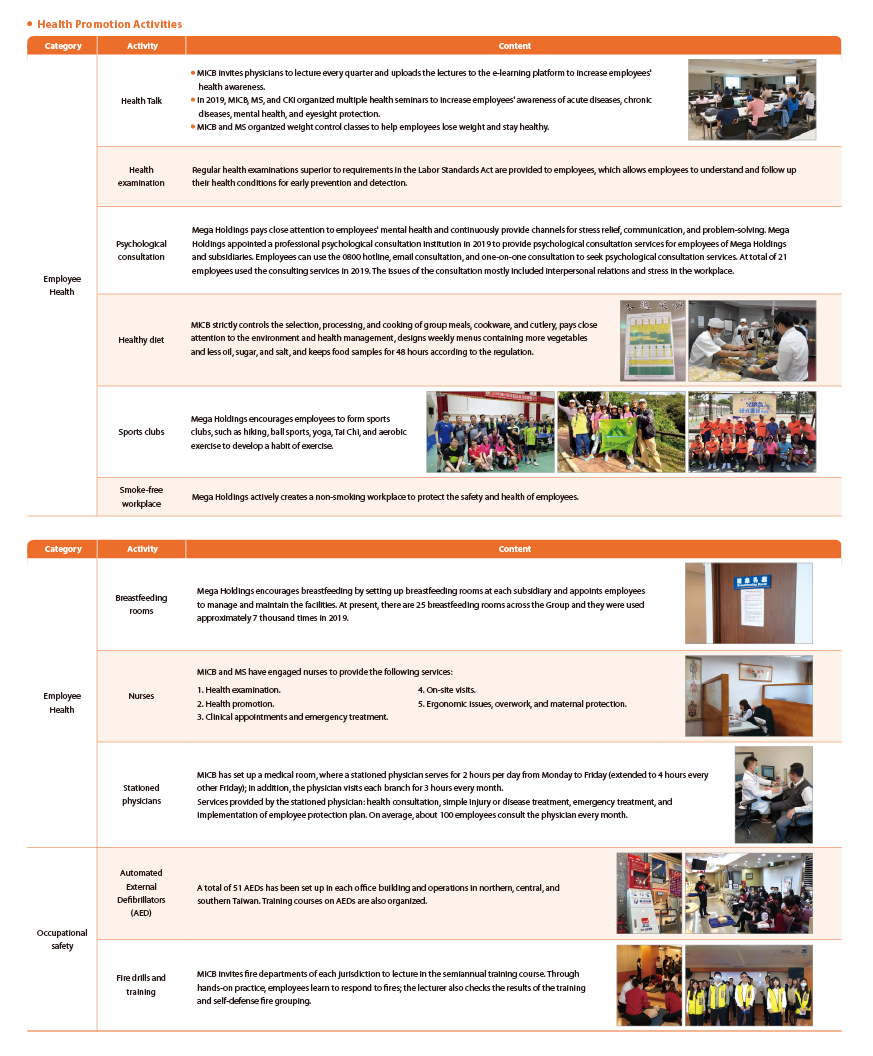The Group values employees' health and safety, and takes the following measures to ensure the cleanness, health, and safety of the working environment:
-
Security personnel or guards are set up at office buildings to screen the flow of people and deal with emergencies.
-
Clean and disinfect the working environment on a regular basis.
-
Conduct safety tests on drinking water, fire facilities, air conditioning, lighting, and elevators.
-
Implement a non-smoking working workplace.
-
Set up clean breastfeeding rooms.
-
Ensure the normal operation of surveillance systems.
-
Engage professional inspectors to inspect the CO2 concentration in the working environment.
-
The security company organizes the training courses for security personnel every year according to the contract. The training courses cover safeguards, emergency treatment, and human rights. In 2019, all security personnel received the training course on human rights.
-
MICB organizes security corps in accordance with requirements of the National Fire Agency, Ministry of the Interior to take charge of information delivery, alarms, protection, rescue, fire safety, self-defense, and assistance in disaster relief.
In addition to providing related occupational safety and health training programs in accordance with laws, the following training programs were also provided:

MICB has set up a unit in charge of labor safety and health and the Occupational Safety and Health Committee, which consists of 6 members from the management and 3 members from the union (accounting for 33% of the total members). The Occupational Safety and Health Committee convenes a meeting every three months to resolve and supervise the plans for employees' health and safety.
MICB promotes workplace health promotion programs and implements occupational safety and health to protect employees from occupational diseases, reduce medical insurance expense, enhance cohesion, and increase work efficiency and quality as well as improve the corporate image. Mega Holdings' health promotion programs are as follows:

For employees who are injured due to the performance of duties or accidents during commutes, the Group helps to apply for benefits for occupational outpatient services, hospitalization, injury, sickness, and disabilities depending on the severity of injuries and gives occupational sick leaves. After incidents, the Company expresses the consolation at the first time to care for the victims with sincerity.